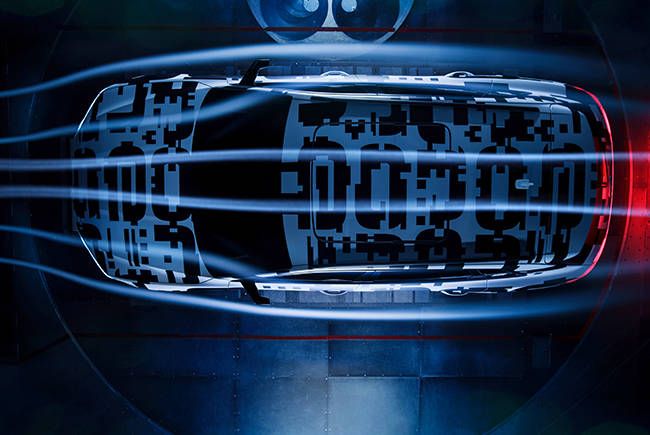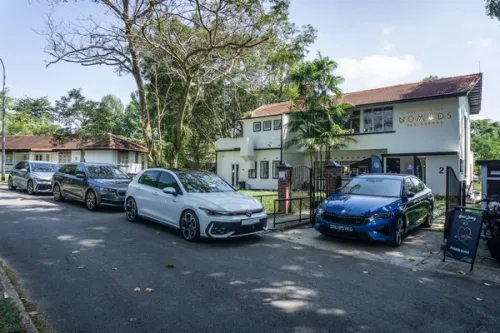Decisive Aerodynamics Smooth The Way For The Audi E-Tron Prototype
Ingolstadt, June 4, 2018 – The better an electric car’s aerodynamics, the further it travels, which is why the Audi e-tron prototype has already recorded more than 1,000 hours on the test rig in the Ingolstadt-based Audi Wind Tunnel Centre. In what is notable as the world’s quietest vehicle wind tunnel, Audi engineers have been harnessing the 186mph wind speed capability of its 2.6-megawatt fan to perfect the car’s efficiency and comfort in readiness for the series production model.


The result is an impressively drag coefficient of 0.28 – a top achievement in the SUV segment and a decisive factor in the everyday range of more than 248 miles in the WLTP cycle. A hundredth of the drag coefficient figure represents a range of around 3 miles under everyday conditions. Other key aerodynamic aspects that contribute to the streamlined all-electric SUV include optional virtual exterior mirrors, which will be a series production car first.
On long journeys where the Audi e-tron prototype is perfectly at home, the drag constitutes the key driving resistance – far more important than the rolling resistance and inertia. The energy is lost which the car needs to overcome this resistance.
That is why good aerodynamics are so important. In urban traffic, however, other factors come into play. Here an electric car can recover a large part of the used energy when braking, thereby reducing the importance of its mass.
To achieve the drag coefficient of 0.28, the Audi engineers developed a wide range of aerodynamics measures in all body areas. Some of these technical solutions are evident at first glance, while others fulfil their purpose hidden away from sight. Thanks to these solutions, the drag coefficient for the Audi e-tron prototype is almost 0.07 less than for a comparable, conventionally powered vehicle. With a typical usage profile this set-up increases the range by around 21 miles per battery charge in the WLTP cycle.
The optional virtual exterior mirrors will be making their world premiere in the series-production version of the Audi e-tron prototype. They are much narrower than the standard mirrors, reducing the vehicle width by 15cm and, thanks to their new shape, not only reduce drag, but also noticeably contribute to cutting the already impressively low wind noise. Each of their flat supports integrates a small camera. The captured images appear on OLED displays in the transition between the instrument panel and door. The virtual exterior mirrors can be adapted for various driving situations, thus potentially improving safety. Three views are available in the MMI system – for motorway driving, turning and parking.
Another important factor is the standard adaptive air suspension – a pneumatic suspension with adjustable damping. At speeds above 74mph, it lowers the body by up to 26mm below the normal position, thus reducing the drag. The underbody of the all-electric SUV is fully enclosed; the front and rear area are fully panelled. Underneath the passenger cell, an aluminium plate protects the high-voltage battery against damage from below, such as stone chipping or kerbs. Its bolting points come with bowl-shaped indentations, similar to the dimples on a golf ball. They make the air flow much better than a totally flat surface.

The controllable cool-air inlet – a frame behind the Singleframe with two electrically operated louvres – also helps to lower drag. When shut, the air in this area flows with virtually no swirl.
As soon as the drivetrain components need cooling or the air conditioning condenser requires ventilation, the top louvre opens first and then both louvres. When the hydraulic wheel brakes are subject to high loads, the controllable cool-air inlet opens and releases two ducts which channel the cooling air into the front wheel arches to the brakes.
The side air inlets at the front of the Audi e-tron prototype incorporate additional ducts, which are clearly visible from outside, to the wheel arches. They channel the airstream so that it flows past the outside of the standard aerodynamically optimised 19-inch wheels. Their design is flatter than with conventional wheels. The 255/55 size tyres stand out with their ultralow rolling resistance. Even the tyre sidewalls add to the aerodynamic design – the lettering is negative instead of raised.
Credits:


Get the Best Price for your used car
from 500+ dealers in 24 hours

- Convenient and Hassle-Free
- Consumer Protection
Transparent Process
With No Obligation








